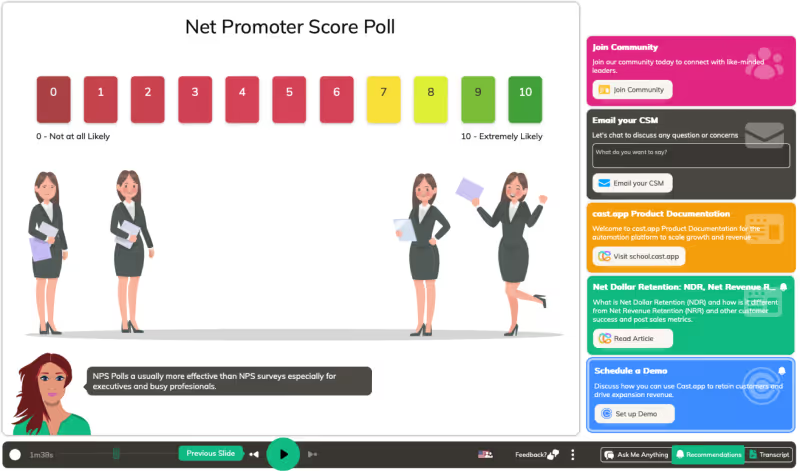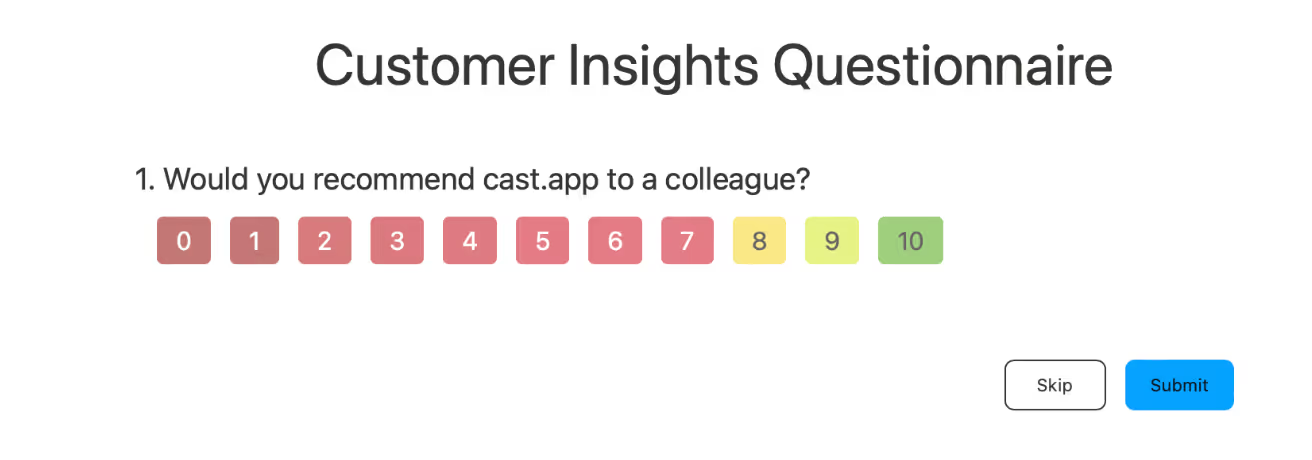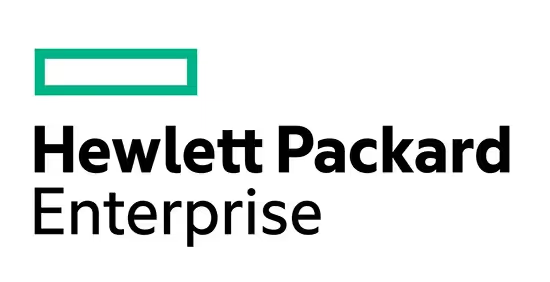In the rapidly modernizing B2B landscape, continuously enhancing customer experience (CX) is becoming increasingly crucial.
To provide a more comprehensive view of CX and drive strategic decision-making, this article explores the integration of conventional lagging metrics with newer advanced metrics
NPS is old. In 2003, Bain and Company created it, and it has since become a standard metric. People have a love/hate relationship with it. And everyone has an opinion. Regardless, it is safe to say NPS, like any other lagging metric, is great to use to tell a story, but don't bet your business on any lagging metric, including NPS. Read more about vanity, lagging, and leading metrics in the article: Early Indicators of Future Success.
Revisting NPS: Net Promoter Score (NPS) is a customer loyalty metric that measures your customers' willingness to recommend your products or services to an others. It is used to gauge your customers' overall satisfaction with your product or service and their loyalty to your brand. NPS is measured on a 0-10 Likert scale. It can be measured on a 1-5 scale too, but then benchmarking becomes challenging.
Cast.app supports NPS polls and NPS in forms embedded on presentations, that outperform conventional survey based NPS.


NPS measures your customers' attitude or willingness to recommend, and is therefore often referred to as a relational and attitudinal metric. There are proponents of behavioral data, observing user actions within a product to inform responsive strategies.
However, neither behavioral data nor attitudinal data is enough on its own. In B2B settings, it's vital to map these attitudinal insights to actual behavioral data to anticipate and manage churn effectively.
Net "Promoter" Score is particularly effective when you ask "promoters" for referrals. Not a day later, not weeks later—as user sentiment may change day-to-day—in real-time.
Cast.app can—in real-time—ask for both the willingness to refer and a referral from promoters. You can also redirect detractors (who give a score of 0-6) to a customer success manager or the executive, depending on the customer's role. You can ask moderates (who give a score of 7-8) for a meeting, in real-time.
Referrals from deeply engaged, expert users carry significant weight. These referrals are typically more influential and result in higher conversion rates than those from less engaged users.
Leveraging real-time referrals from NPS promoters or Satisfied customers who are experts can significantly propel business growth. We will cover overall satisfaction from customers and partners in the following sections.
To foster new customer growth, actively seek referrals from experts and promoters—those who provide high Customer Satisfaction (CSAT of Very Satisfied) or a high NPS (rating of 9 or 10) in real-time.
The transformation from a prospective client to a product expert is critical in B2B contexts. Personalized learning and continuous engagement are essential in fostering this expertise, which, in turn, leads to high-quality referrals and sustained business growth.
What is NRR? Net Revenue Retention (NRR) is a metric that measures the percentage of recurring revenue retained from existing customers over a given period, including the effects of upgrades, downgrades, and churn. It is a crucial indicator of customer satisfaction and business health. NRR is measured using a percentage scale. Read the most in-depth article on NRR here.
NRR Rate = (starting revenue - customer churn - revenue churn + upsells + cross-sells + add-ons) / starting revenue

EGR, or Earned Growth Rate, sometimes referred to as NPS 3.0, measures the actual revenue impact of referrals. This, along with NRR, which focuses on the retention of revenue from existing customers, provides a fuller understanding of customer loyalty and economic impact.
What is EGR? Earned Growth Rate (EGR) is a metric that measures the growth in revenue attributable to customer referrals and word-of-mouth. Often considered an evolution of NPS, it specifically tracks the effectiveness of customer referrals in driving new business. EGR is measured using a percentage scale.

Read about the Transformative Role of AI Agents.
This article aims to guide B2B executives through the complex landscape of customer experience metrics, advocating for a holistic approach that leverages multiple dimensions of customer data to drive business success.

